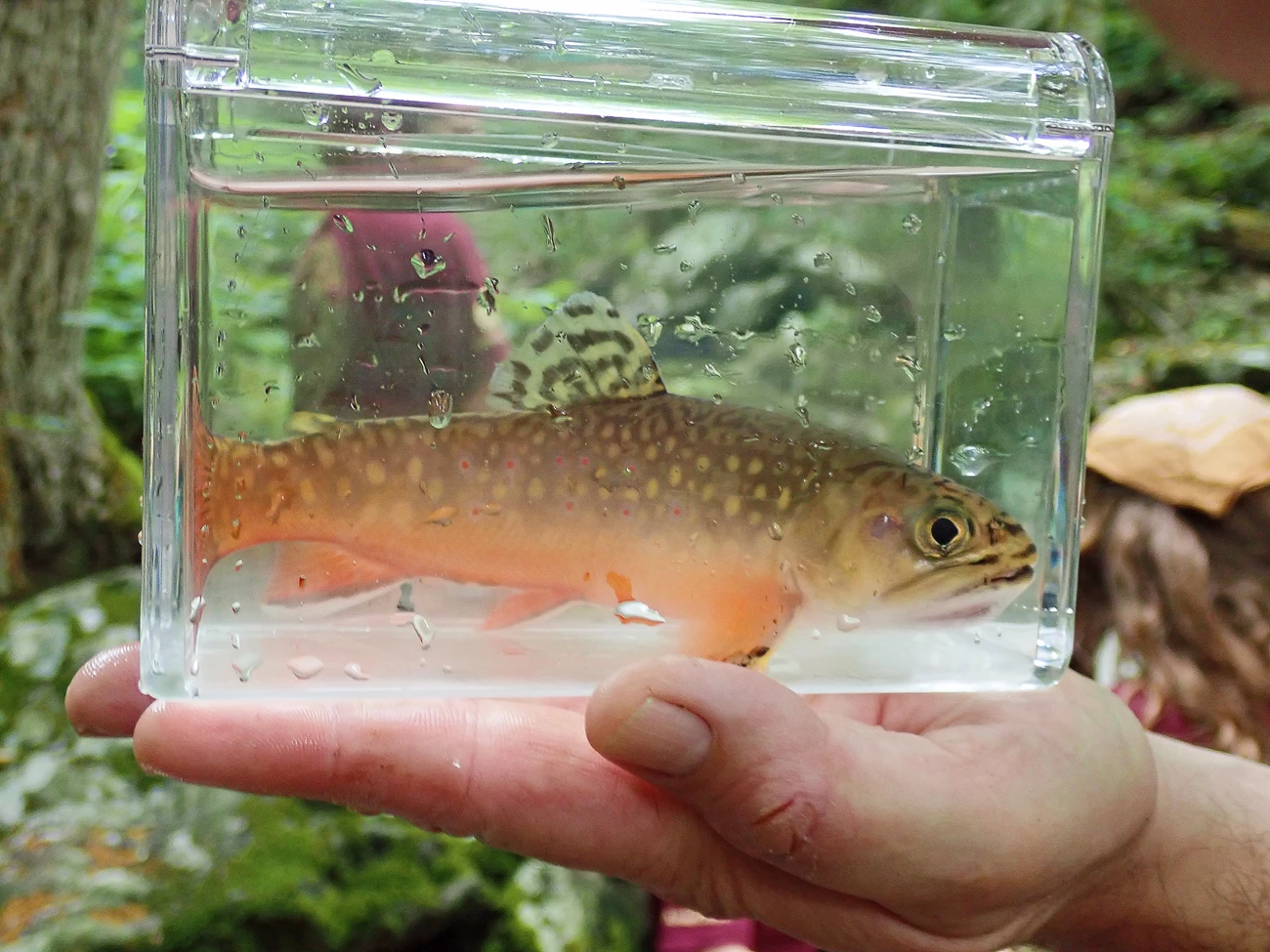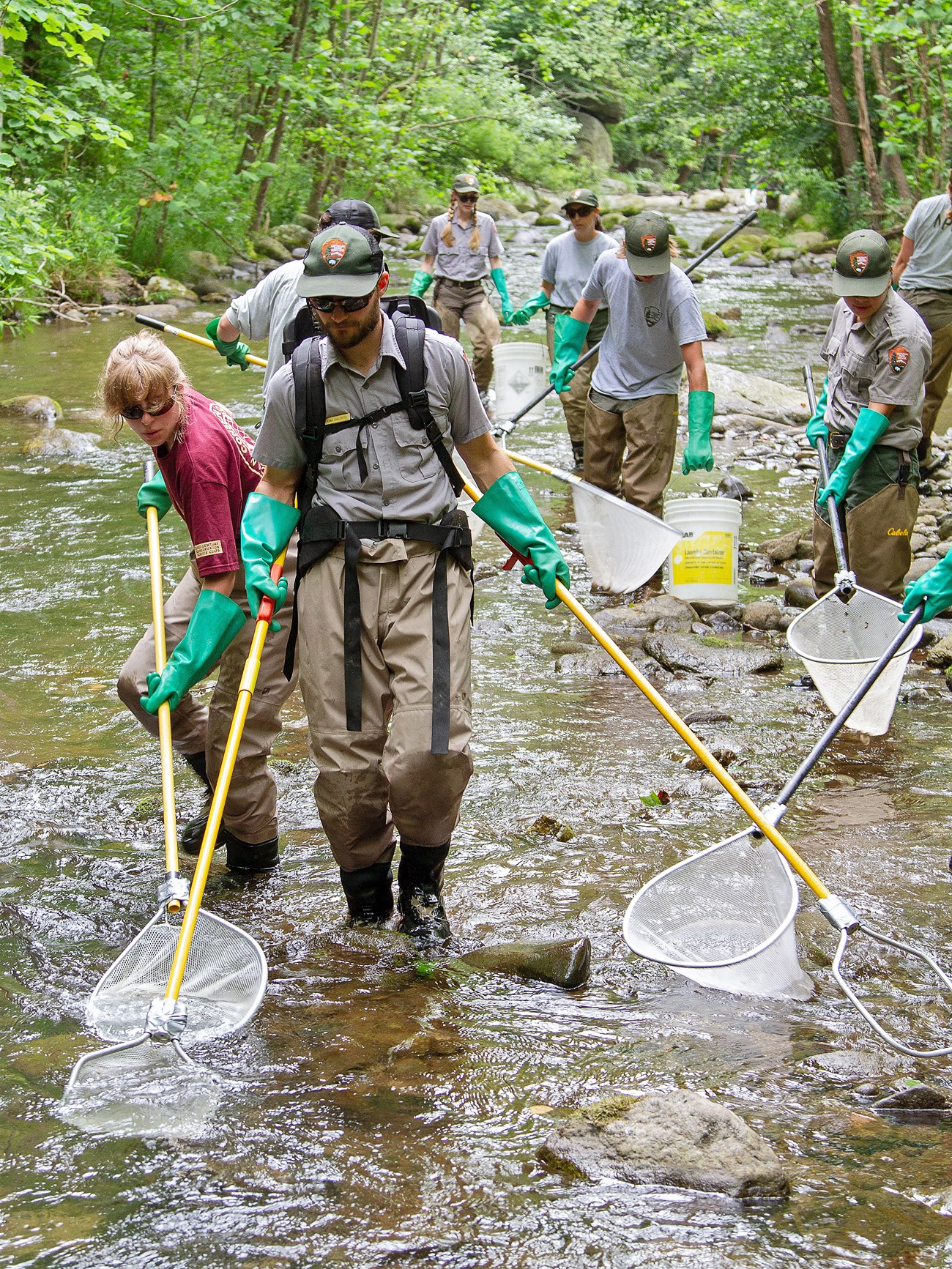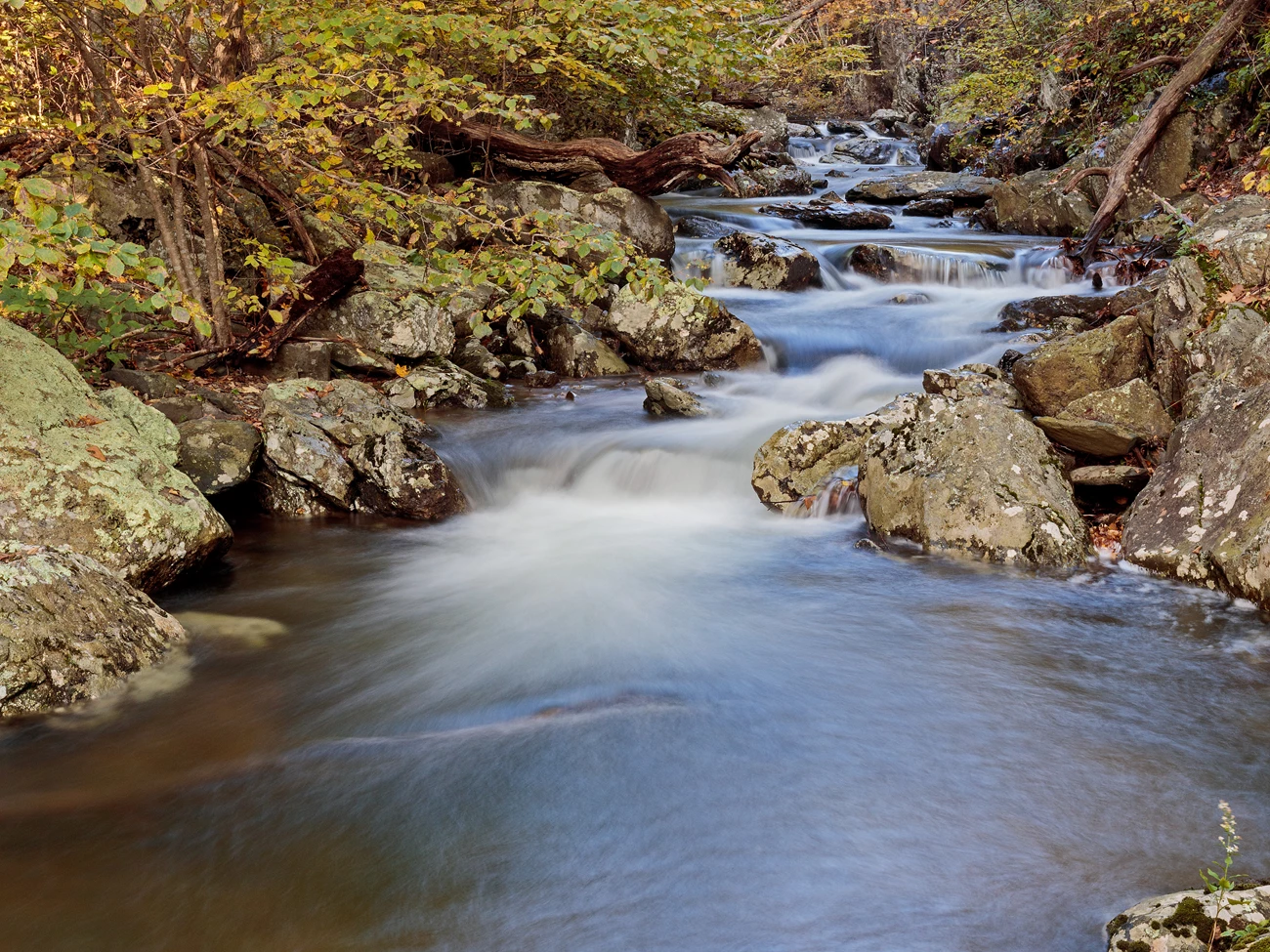Last updated: September 19, 2024
Article
Researchers See Startling Brook Trout Declines in Shenandoah Streams
Land use and pollution used to be brook trout’s biggest problems. But our latest research shows that being a cold-water fish in a warming world might be its greatest challenge yet.
By Jeb Wofford and Evan Childress

Image credit: NPS / Tim Lambert
For almost 30 years, National Park Service biological technician David Demarest has tromped across Shenandoah National Park. Every summer, he visits park streams to capture and count brook trout. Shenandoah is big—just under 200,000 acres, with more than 70 brook trout streams—so Demarest has covered some ground. He’s seen a lot of surprising things too. Just ask him about the last three-foot-long American eel he saw (“It was so fat!”). But he recently started noticing something different with brook trout. “I think the decline has been gradual and hard to detect in some streams,” explained Demarest. “But the last couple of years, it seemed much more noticeable to me. Hogcamp Branch comes to mind. It’s one of our best streams, but last summer, we didn’t even see 100 trout in our monitoring site there. In another stream, we’re down from hundreds of trout in the 1990s to single digits now.”
Brook trout function as an "early warning system" for environmental problems in Appalachian streams.
The two of us worked with Demarest and U.S. Geological Survey scientists to find out how big a problem this is. We recently published a paper in Transactions of the American Fisheries Society describing our work. The study results, based on 27 years of monitoring data, aren’t encouraging. We found sharp declines in brook trout across the park, mainly related to rising temperatures. But we also found some recovering populations and clues about how and where the park could conserve brook trout in an increasingly warm climate.
Stunning Models
Brook trout function as an “early warning system” for environmental problems in Appalachian streams. They can alert us to broader ecological problems because they’re sensitive to things like pollution, non-native species, forest loss, and excessive heat. If you’re exploring the mountains and you find a stream full of brook trout, you can be sure the water is clean and cold. But many streams across the eastern United States have lost their brook trout because of those stressors. In Virginia, brook trout are now largely confined to public lands protected from development. Even so, large-scale problems like air pollution and climate change can threaten protected brook trout. Were these threats harming populations in Virginia’s largest national park?
Image credit: NPS
Demarest and a crew of park staff and volunteers have been monitoring brook trout in Shenandoah’s streams since the early 1990s. They capture fish using electrofishing, stunning them with electrical wands, and gather data on brook trout abundance, age, and size before releasing the unharmed fish back to the stream. They also measure stream temperature and other physical characteristics. Using maps back in the office, park staff can determine watershed dimensions, elevation, and geology at each monitoring site.
In at least three streams, brook trout completely disappeared during the study period.
We used the monitoring data from 1996–2022 to build mathematical models to learn how Shenandoah’s trout numbers were changing. We didn’t have data from all the park’s streams, but measures like trout abundance are related to stream characteristics. By including these characteristics in our models, we were able to estimate brook trout population changes for every stream in the park—even ones we don’t monitor.
How Low Can They Go?
Our results suggest that over those 27 years, brook trout declined by at least 50 percent in more than 70 percent of Shenandoah’s streams. It didn’t matter if the fish were large or small—we saw similar declining trends for adult and juvenile brook trout. And in at least three streams, brook trout completely disappeared during the study period.

Image credit: NPS
In our study, stream elevation, size, and underlying geology all strongly influenced the direction and speed of trout population change. Low-elevation streams had warmer water, which was associated with brook trout declines. We documented increasing air temperatures at the park too, and continued warming of streams due to climate change will likely further harm many of the park’s sensitive trout populations. Small streams also showed sharper declines than larger streams. Small watersheds may have more limited habitat, so it’s possible that trout can’t find refuge from warm water or other stressors like low stream flow.
More Fish in Surprising Places
Although brook trout declined in most streams, we found some positive results related to Shenandoah’s complex geology. Remember acid rain? That’s when pollutants in the atmosphere from coal-fired power plants and other sources lower the pH of precipitation, making the rain acidic. Fortunately, the Clean Air Act Amendments of 1990 greatly reduced acidic emissions. Some of Shenandoah’s streams were relatively unharmed or recovered quickly because the chemical properties of their underlying bedrock and associated soils helped neutralize acidity from the rain. But other streams have been slow to recover.

Image credit: NPS
These increases likely indicate partial recovery from improvements in air quality since the 90s.
In those slow-to-recover, acid-sensitive watersheds, the bedrock has fewer acid-neutralizing properties. Acidic compounds have thus built up in the soil and continue to leach out and harm ecosystems, despite improvements in air quality. But surprisingly, it was primarily in these acid-sensitive streams where we found increasing trout populations. These increases likely indicate partial recovery from improvements in air quality since the 90s. As air quality has gotten better, rain events in these acid-sensitive streams now produce less severe spikes in acidity, perhaps helping brook trout survive. It’s possible that the acidity improvements are masking the negative effects of water temperature increases too.
A Study to Help Parks Strategize
For anglers, the implications of trout declines in so many streams are obvious. Randomly pick a stream in Shenandoah, and odds are it has less than half as many brook trout to catch as it did 30 years ago. But what do our results mean for the park and for brook trout conservation? Though the brook trout trends are discouraging, this study will help determine which streams are more resilient to environmental change. In general, these are larger, higher-elevation streams and perhaps streams that are recovering from acid rain impacts. Staff can then prioritize those streams for protection from other stressors, such as eradicating invasive aquatic species or managing forest pests. Healthy, pest-free forests benefit streams by shading them and keeping them cool. Our work can also identify places where different angling regulations might better protect sensitive populations.
This study will help determine which streams are more resilient to environmental change. Staff can then prioritize those streams for protection from other stressors.
It’s unclear exactly what the future might bring for these cold-water fish in light of climate change. The population recovery we saw in some watersheds could be short-lived, or it could indicate these watersheds are more resilient. Under the right conditions, brook trout have bounced back from other kinds of environmental catastrophes. But climate change projections aren’t good, and these results suggests a difficult future for brook trout in Shenandoah. That said, continued research may help park managers identify streams where that future looks brighter. “My favorite thing about working in the park is that every day, I learn something new,” said Demarest. With studies like this, that learning will continue. And hopefully each new finding will help scientists and land management agencies protect this iconic fish.


